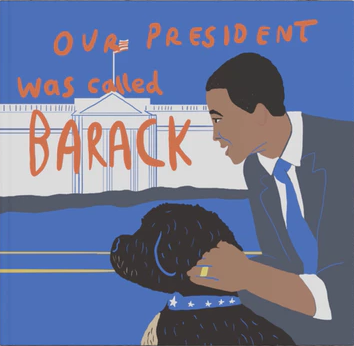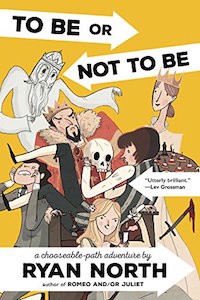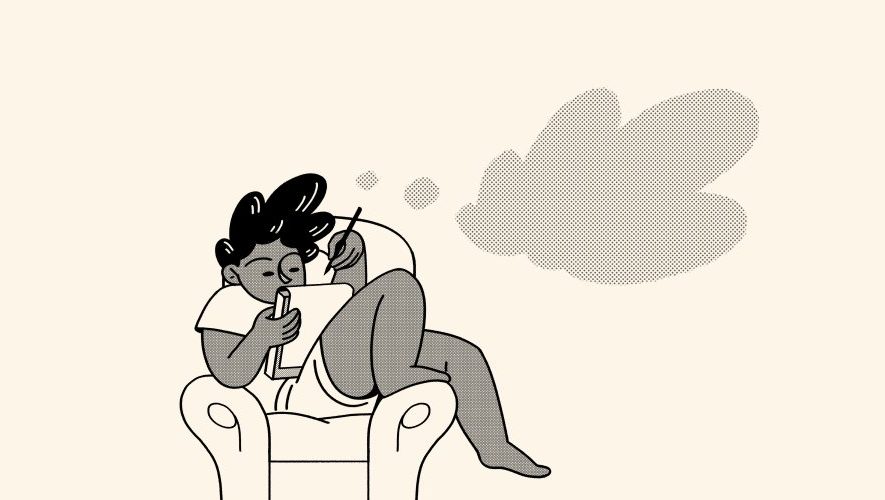Books & Culture
How Kickstarter Is Changing Publishing
The crowdfunding platform lets authors skip the hurdles of traditional book publishing—but is it worth it?

Laura Olin raised the money to publish her book in a little over a day.
Olin, an author and social media strategist who worked on President Barack Obama’s 2012 reelection campaign, spent November Kickstarting her children’s book Our President Was Called Barack.
The book, written by Olin and illustrated by artist Franziska Barczyk, was funded in 33 hours, raising $39,792 — $14,792 more than its $25,000 goal, falling just a few hundred dollars short of its $40k stretch goal.

Billed as a “yes we can book for children,” the project tells the story of Obama’s presidency, and more importantly, the way he invited ordinary people to become activists.
“I’m not asking you to believe in my ability to bring about change — I’m asking you to believe in yours’ was his overriding message from the beginning,” said Olin. “I think it’s important that kids hear that right now. Most biographies or otherwise traditional books seem to be uninterested or downright timid about getting into that space.” She wrote the book to provide a good presidential example to her nephews and kids like them.
It’s the second book for Olin, whose novelty book Form Letters: Fill-In-the-Blank Notes to Say Anything to Anyone came out in 2016. That project was published by a traditional publisher, Harry N. Abrams. It was a process Olin described as “perfectly okay.” But she had different aspirations for Our President Was Called Barack. For one thing, she wanted to get it on shelves quickly.

“I realized that I wanted to go faster with this book than traditional publishers can go,” she said. “Their time horizons tend to be a year and a half from proposal to publication, even two years.”
Olin was also inspired by Chance the Rapper and other artists who’ve found an audience without the help of traditional publishing gatekeepers. “We’re at this point in the life of the internet where being pretty autonomous can be possible sometimes, if you’ve got something compelling to offer and you get a bit of luck,” she said.
Olin is one of thousands of authors who are choosing to Kickstart their books.
Although you may think of Kickstarter as a platform for games and gadgets, publishing has always been among Kickstarter’s offerings. It just might not get the attention games or technology do because publishing projects tend not to raise millions of dollars the way a game might, said Margot Atwell, Director of Publishing for Kickstarter.
Still, book projects do all right. Publishing, a category which encompasses books, comics, and journalism, has so far had 13,297 projects funded in Kickstarter’s nine years, raising $132 million total. Right now, there are more than 300 publishing campaigns live on Kickstarter. Those projects include bookstores, journalism projects (notably, a campaign to save Gawker), and of course, books.
So far 13,297 publishing projects have been funded in Kickstarter’s nine years, raising $132 million total.
“This really showcases that there’s a community of backers who want to support literary works,” said Atwell. A lot of backers are book lovers; according to Atwell, more than 1.5 million backers have pledged to at least one publishing project.
Authors decide to fund projects through Kickstarter for a variety of reasons. Some, like Olin, might want to publish a book fast. Authors from marginalized communities, who might not be able to get their voices heard in the traditional publishing world, can bypass gatekeepers and go straight to a community of readers. Kickstarter publishing has fewer barriers to entry; writers can publish what they think people care about, rather than what a publishing house or agent thinks will sell. But make no mistake: While crowdfunding can help an author dodge some of the baked-in biases of the publishing world, it’s still a popularity contest.

Josh Fruhlinger is the blogger behind The Comics Curmudgeon, a longstanding blog that lovingly snarks on newspaper comics. He decided to Kickstart his own novel, The Enthusiast, in 2012. His goal was $6,666, and he blew past it, bringing in $20,159. Being an established blogger with his own audience helped immensely when it came to raising that cash, he says: “If you don’t have a built-in audience existing already, or a big social media network, it might not be as rewarding.”
One of Fruhlinger’s biggest post-campaign challenges was delivering the manuscript itself. Although he has been a professional writer for almost his entire career, he’d never written a novel before. He assumed he’d have the book done and ready to go by November 2013, but the process took longer than he expected, with books shipping out in December 2015. That delay stressed Fruhlinger out; he felt like he was cheating his backers by not producing the novel by Nov. 2013. Some backers agreed—one even asked for a refund.
Authors from marginalized communities, who might not be able to get their voices heard in the traditional publishing world, can bypass gatekeepers and go straight to a community of readers.
“I had all this money sitting in a bank account that I felt responsible for for two years, and it was really stressful to me,” he said.
Fruhlinger’s advice to any writer considering a Kickstarted book? Write the book first. Atwell agrees; she always encourages new authors to do as much work on their projects as they can before they launch their campaigns.
“That has two benefits,” she said. “One, the creator can really show backers what they’ll be getting if they back the project, and they can impart confidence that the book will get done, and two, once money changes hands, it can feel like the stakes are raised for the creator, so it’s helpful to do as much work as possible before that happens.”
Kickstarter can also act as a laboratory for ideas that might seem risky to traditional publishers; creators can test ideas that might raise an eyebrow for an agent or publisher and later use the success of the Kickstarter as proof the idea worked.
Crowdfunding Fiction: Talking With Charlie Fish, Founder Of Fiction On The Web, About Patreon
One author who did that was Ryan North, the creator of Dinosaur Comics and the current writer of Marvel’s Squirrel Girl. North had an idea: a choose-your-own adventure Hamlet. His agent, Seth Fishman, of The Gernert Company, didn’t think he’d be able to get a publisher to buy it for more than $20,000. So he suggested that North Kickstart the project.
The book, To Be Or Not To Be: That is the Adventure, met its funding goal of $20,000 in less than three hours, and ultimately raised $580,905. The success of that campaign allowed Fishman to sell the next one, Romeo And/Or Juliet, to Riverhead Books. Riverhead also picked up To Be Or Not To Be.

Fishman, who represents authors from Ann Leckie to Ryan North to Sarah Andersen of Sarah’s Scribbles, believes crowdfunding and traditional publishing can co-exist harmoniously. He Kickstarted a book of his own this summer, and many of his clients are independent web comics creators who are used to Kickstarting projects and otherwise operating independently. Fishman has seen them combine their independent projects with traditional publishing in various ways.
For example, one of his clients is Zach Weinersmith, the creator of the Saturday Morning Breakfast Cereal webcomic. Weinersmith and his wife Kelly wrote a book about emerging technology, Soonish, released in October. In June, however, the pair Kickstarted another project, Science: Abridged Beyond the Point of Usefulness, a very small book about science. They wanted to offer Soonish as one of the rewards to their backers. The rewards would count as preorders of Soonish. Fishman role was to help convince the publisher of Soonish to support the experiment and set up distribution of the book through independent bookstores.
There are other notable marriages of crowdfunding and traditional publishing, not all of which involve the Kickstarter platform. Last year, for example, Hugo winner N.K. Jemisin made news when she was able to quit her day job and write full-time, thanks to her fans funding her through Patreon.
So, with the rise of crowdfunding, do authors still need traditional publishing?
With the rise of crowdfunding, do authors still need traditional publishing?
The traditional publishing houses we reached out to didn’t respond to requests for comment, but Fishman thinks authors do need publishers and agents. Aside from the things agents do to make life easier and more profitable for their clients — having lawyers on call to review contracts, foreign rights, television and film rights, feedback on ideas, for example — a traditionally-published book can open doors for even successful independent creators.
“What I’ve found for better or worse, is that traditional publishing provides a big of focus point in terms of validation and publicity,” he said.
Many of Fishman’s clients — like North, Weinersmith, or xkcd creator Randall Munroe — are already well-established as independent artists. They already have a large audience, and they may be doing well financially, but having published a book with a traditional publisher widened their audience, says Fishman.
Munroe’s webcomic, xkcd, for example, has a huge readership, but once he’d published a book traditionally, that book functioned as a kind of permission slip; fans who worked in media had an excuse to book him as a guest on their shows. His status as a published author, says Fishman, serves as an effective advertisement for his other work.
“Financially, self publishing can be all you need,” he says, but he calls a traditionally published book “one of the most effective advertisements” a creator can get.
“I think crowdfunding is really complementary to publishing,” said Atwell. “Kickstarter is a tool that authors and publishers can use to test out an idea, build excitement for a book or project, or garner support for a project that falls outside what they normally do.”
“Kickstarter is a tool that authors and publishers can use to test out an idea, build excitement for a book or project, or garner support for a project that falls outside what they normally do.”
Launching a Kickstarter project, she said, is a lot like launching a book. Authors need all the same things: a description, an author bio, an image, and a plan for spreading the word. It’s a lot of work, but if a project is funded, it can be worth it. Olin’s campaign wrapped up on December 8, and according to her campaign, books are due to be shipped in May. She offered two post-campaign thoughts: Don’t launch during the holidays, and believe Kickstarter veterans when they say how much work a campaign is — it’s often difficult to get press for a Kickstarter, and authors often have to sink money into their project before they make any money back.
“Unless you’re multitalented or have many multitalented friends who are okay with working for free, you probably need to pay to get a video made, produce graphics, buy music, do prototypes, and so on,” she said.
Fruhlinger, who wrote his own post about the trials and triumphs of Kickstarting a novel, agrees that Kickstarting ain’t easy. While the $20,159 he raised seems like a lot of money, much of those funds went toward the production of the book itself: editing, art, printing, and postage. (Atwell says distribution and the cost of postage are often hurdles faced by Kickstarter’s authors.) After he finished printing and fulfilling rewards to backers, but before he started selling books, his Kickstarter profit — his payment for two years of work — was just $467.55.
After he finished printing and fulfilling rewards to backers, but before he started selling books, his Kickstarter profit — his payment for two years of work — was just $467.55.
In the end, Fruhlinger was very happy with The Enthusiast. The book contains art from three different artists, and was printed in paperback and hardcover. He’s sold 1,500 copies of the book so far, selling from both online and brick-and-mortar stores, and his profit rose to a more comfortable $4,369.14. But having Kickstarted once is enough for him.
“If I were going to do another novel, I would try to go through an agent,” he said.
Olin says she’d definitely Kickstart again. In fact, she’s more likely to Kickstart again than to traditionally publish. She thinks other authors should crowdfund their books as well.
“It’s a really clarifying and focusing thing to think about an idea, and how to sell its value to other people, for the length of time it takes to put a Kickstarter campaign together,” she said. “It could lead to better books for all of us.”
Asked what he’d say to an author torn between getting an agent for a manuscript and Kickstarting a book, Fishman responded that it really depends on an author’s goal for a project. He feels that it’s at least worth trying to get an agent, but if that road doesn’t work?
“If you can’t find an agent and you believe in the book, go ahead and self-publish,” said Fishman. “Prove us wrong. Because we’re wrong all the time.”

Thinking of Kickstarting your book? Here’s some advice from Margot Atwell:
Make a plan: “Spend time planning your project and looking at other campaigns that are similar to what you’re planning to do before you launch yours. Make a budget carefully: make sure you cover all your costs, but keep it as low as you can, since Kickstarter is an all-or-nothing platform, and you can always raise more than you ask for but not less.”
Be clear about what you’re writing and why: “A good Kickstarter Publishing project clearly tells the story of what the creator is making, why it’s great, and why readers will want to get their hands on a copy, using all the tools the platform provides, including a well-done video, attractive images and/or GIFs, a compelling description, and appealing rewards.”
Make sure your Kickstarter page is visually appealing: “Even though readers care about the quality of the writing and what the book contains, that old chestnut really does hold true: on the internet, a picture’s worth a thousand words. We’re all really accustomed to scanning quickly over websites, so a project description that’s just a wall of text tends to lose all but the most passionate fans.”
Get the word out: “Come up with a good outreach plan–and a Plan B and Plan C in case that doesn’t get you past the finish line. Also, don’t be shy–tell people about your project! You’ve written something cool that’s important to you–you should give other people the chance to discover it and enjoy it.”










